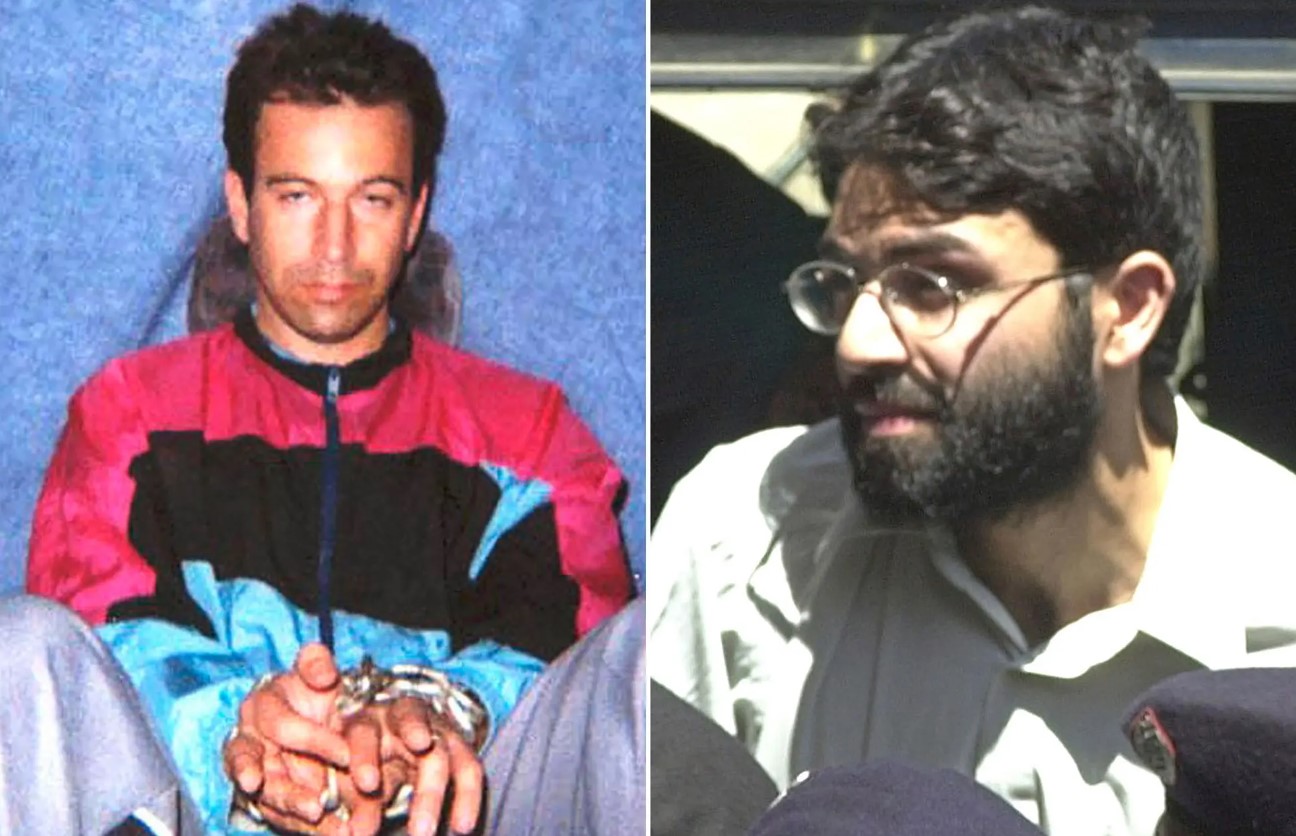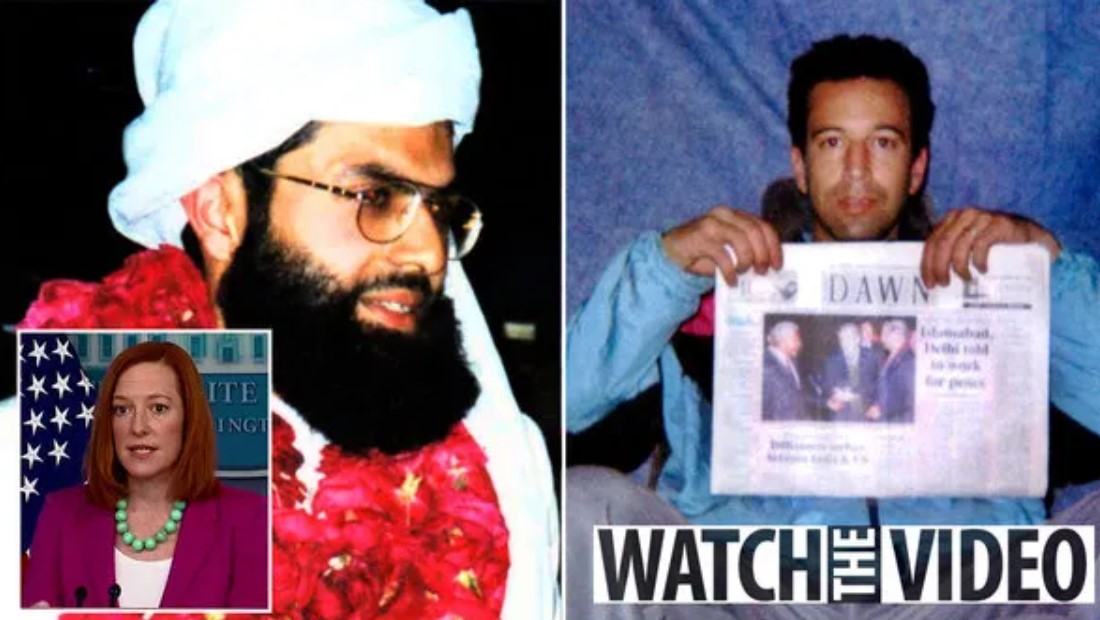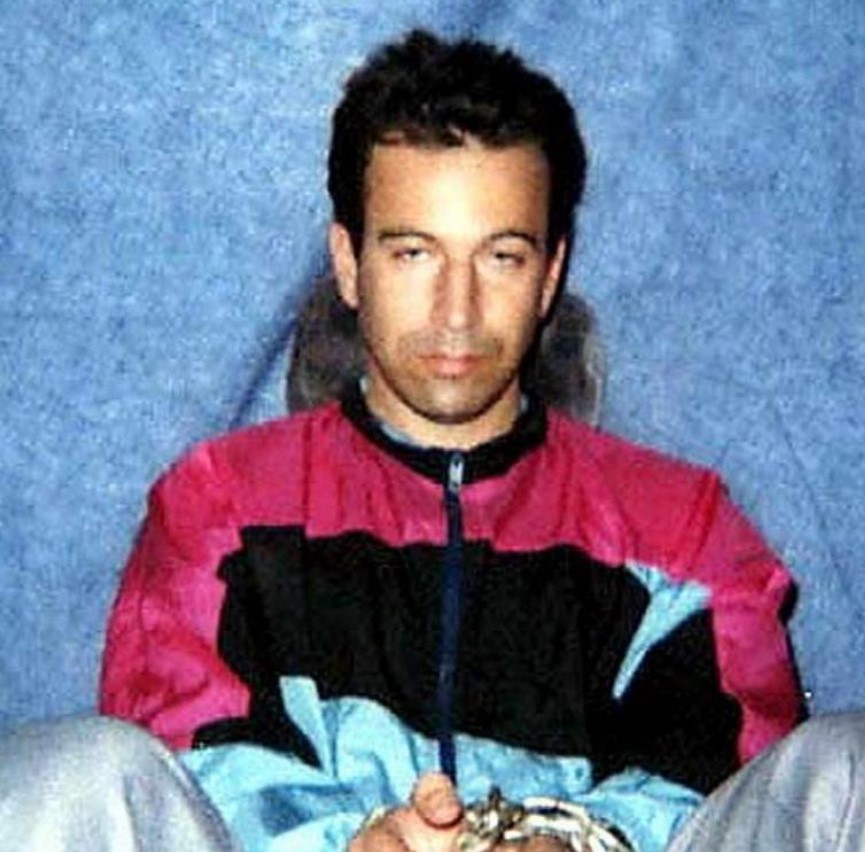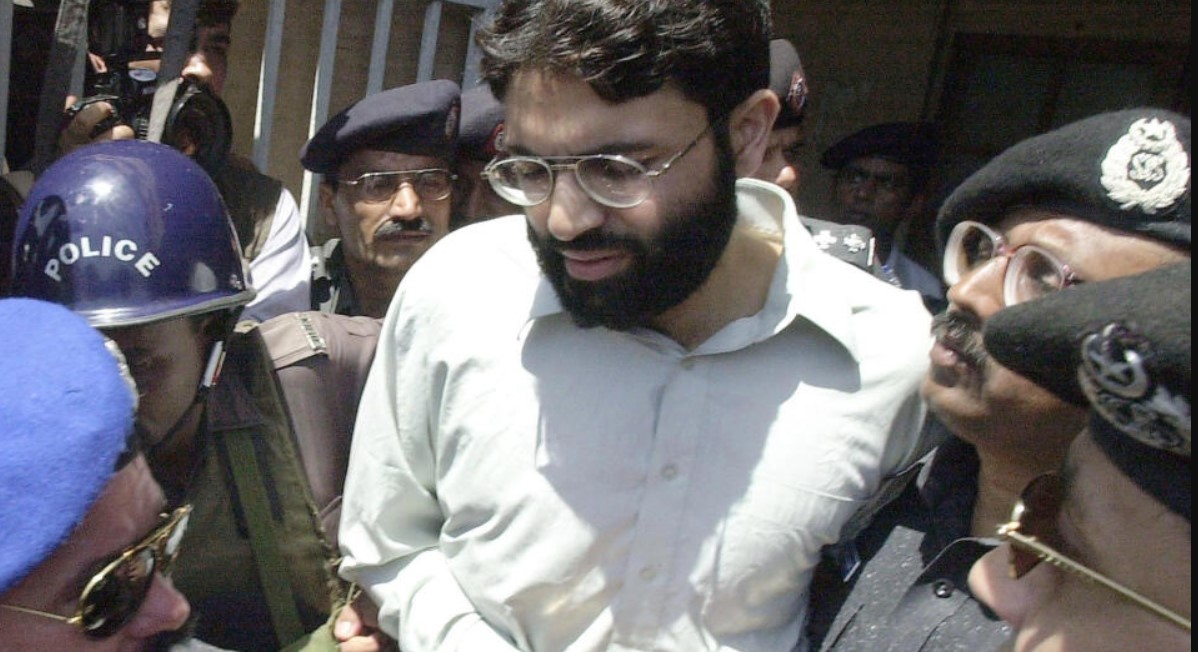Unveiling the Daniel Pearl Death Leaked Video Original
The tragic murder of American journalist Daniel Pearl in Pakistan in 2002 shocked the world when a video documenting his death was leaked, sparking global outrage. At nhahangmonhue.vn, we explore the controversy surrounding the Daniel Pearl death leaked video original, delving into its impact on journalism and the ongoing discussions about its historical significance and ethical implications regarding its public availability. Daniel Pearl, born on October 10, 1963, was kidnapped on January 23, 2002, and sadly murdered on February 1, 2002.
| Category | Daniel Pearl |
|---|---|
| Birth | October 10, 1963 |
| Death | February 1, 2002 |
| Occupation | Journalist |
| Nationality | American |
| Kidnapping | January 23, 2002 |
| Murder | February 1, 2002 |
| Video Leak | 2002 |
Contents
The Leaked Video of Daniel Pearl’s Death
Release of the Video
In 2002, the horrific murder of journalist Daniel Pearl shook the world when a video of his beheading was leaked by his captors. The graphic and disturbing footage sparked outrage and condemnation from people all around the globe, igniting calls for justice to be served for the heinous crime.

The release of the video also sparked a heated debate among the public. Some argued that the video should be banned due to its extreme violence and the impact it could have on viewers. They believed that such graphic content should not be accessible to the public, as it could potentially incite further violence or desensitize individuals to the brutality of terrorism.
On the other hand, there were those who believed that the video was a crucial historical document that needed to be made available to the public. They argued that the footage served as a stark reminder of the dangers of terrorism and the lengths to which extremists would go to spread fear and violence. By having access to such footage, people could fully grasp the brutality of these acts and work towards preventing future atrocities.
Ultimately, the release of the video of Daniel Pearl’s murder sparked a larger conversation about the depiction of violence in media and the responsibility of sharing such graphic content with the public. It forced individuals to confront the harsh reality of terrorism and the impact it has on innocent lives, while also raising important questions about the ethics of sharing such disturbing footage.
How Video Content Impacts Viewer Experience
The release of the video depicting the brutal murder of journalist Daniel Pearl had a devastating effect on his family and friends. The graphic and horrifying footage shook them to their core, leaving them in a state of shock and disbelief. They were overwhelmed by a sense of grief and anger, desperate to erase the video from existence and shield themselves from the unbearable pain it inflicted.
In the wider journalism community, the impact of the video was equally profound. Journalists from all corners of the world were appalled by the heinous act of terrorism captured in the footage. It served as a stark reminder of the dangers faced by journalists who courageously report on conflicts and violence, often risking their lives to bring crucial information to the public eye.
The outrage sparked by the video led to a call for increased protection and support for journalists working in dangerous areas. Many in the journalism community demanded stronger measures to safeguard the lives and well-being of those who put themselves in harm’s way to uncover the truth. The Committee to Protect Journalists issued a statement condemning the murder of Daniel Pearl and emphasizing the need for enhanced security protocols for journalists operating in high-risk environments.
Ultimately, the release of the video served as a sobering wake-up call to the world, highlighting the grave risks faced by journalists in their pursuit of journalistic integrity and truth. It underscored the importance of ensuring the safety and protection of those who dedicate their lives to shedding light on the darkest corners of society. Through honoring the memory of Daniel Pearl and advocating for greater safety measures for journalists, we can strive to prevent such barbaric acts from ever happening again.
The Consequences
The release of the video depicting Daniel Pearl’s brutal murder sparked a wave of reactions from around the world. World leaders condemned the heinous act and called for the perpetrators to be brought to justice. The shocking footage incited outrage from the journalism community, as they mourned the loss of one of their own.
In the aftermath of the video’s release, there was a raging debate over whether the video should be banned. Some argued that allowing such graphic content to circulate only perpetuates violence and desensitizes society. Others believed that the video serves as an important historical document, shedding light on the dangers journalists face in conflict zones.
For Pearl’s family and friends, the video has been a continuous source of pain and anguish. Seeing their loved one’s final moments captured on film has been a heartbreaking experience, reopening wounds that may never fully heal. The knowledge that the perpetrators of Pearl’s murder have yet to face justice only adds to their grief.
In 2002, Ahmed Omar Saeed Sheikh was sentenced to death by hanging for his role in Pearl’s abduction and murder. However, in a shocking turn of events, his conviction was overturned by a Pakistani court in 2020. This decision only further fueled the calls for justice and accountability in the case.
The video of Daniel Pearl’s murder remains a controversial topic to this day, leaving a lasting impact on all those who have been touched by the tragedy. It serves as a stark reminder of the dangers journalists face in pursuit of the truth, and the importance of holding those responsible for such senseless acts accountable. It is a reminder that the fight for justice and truth must never waver, even in the face of unspeakable horrors.
| Reactions to the Video |
|---|
| World leaders condemn the content |
| Calls for swift justice against the perpetrators |
| Debate on potential banning of the video |
| Journalism community expresses outrage |
The Abduction and Killing of Daniel Pearl
The Abduction
On January 23, 2002, journalist Daniel Pearl was abducted in Karachi, Pakistan while conducting an investigation into potential ties between Richard Reid, the “Shoe Bomber,” and al-Qaeda. Pearl was taken from a restaurant in downtown Karachi by a group of armed men and held captive for several agonizing weeks.

During his captivity, Pearl endured unimaginable torture and relentless interrogation at the hands of his captors. He was subjected to physical and psychological torment as they sought information from him. Throughout this harrowing ordeal, Pearl was forced to make a series of videotaped statements, pleading for the U.S. government to intervene and negotiate for his release.
Daniel Pearl’s untimely and senseless death serves as a stark reminder of the dangers faced by journalists and individuals investigating high-risk topics in the pursuit of truth. His legacy lives on as a testament to his courage, integrity, and unwavering commitment to journalistic excellence.
| Timeline of Daniel Pearl’s Kidnapping and Murder | |
|---|---|
| January 23, 2002 | Pearl abducted in Karachi, Pakistan. |
| January 24-February 1, 2002 | Pearl held captive and subjected to torture. |
| February 1, 2002 | Pearl tragically murdered. |
| February 21, 2002 | Release of videotape depicting Pearl’s murder. |
The Homicide
The brutal murder of Daniel Pearl on February 1, 2002 sent shockwaves around the world. As a journalist for the Wall Street Journal, Pearl was simply doing his job when he was kidnapped and eventually beheaded by his captors. The gruesome act was captured on video and released, sparking widespread outrage and condemnation.
In the video, Pearl was seen being held captive by four masked men who took turns reading a statement filled with anti-American sentiment. The men condemned the United States and its policies in the Middle East before carrying out the heinous act of beheading Pearl. The video served as a chilling reminder of the violence and extremism that existed in the world.
The murder of Daniel Pearl marked a significant turning point in the War on Terror. It brought to light the brutality of terrorist groups like al-Qaeda and their allies, and it galvanized efforts to combat terrorism on a global scale. The world was forced to confront the reality of the threat posed by these extremist groups, and action was taken to prevent further acts of violence.
Pearl’s legacy lives on as a reminder of the dangers faced by journalists and individuals who seek to uncover the truth in dangerous areas. His untimely death serves as a somber reminder of the need for vigilance and perseverance in the fight against terrorism. The memory of Daniel Pearl continues to inspire those who work tirelessly to promote peace and security in a world plagued by violence.
The Consequences
The brutal murder of Daniel Pearl sent shockwaves through his family, friends, and colleagues, leaving a deep and lasting impact on all who knew him. As a dedicated journalist, he had risked his life to report on the realities of conflict and terrorism, only to tragically become a victim himself.
The debate that followed his death centered around the role of the media in covering such horrific acts of violence. Some argued that showing graphic images of terrorism only served to sensationalize the issue, while others believed that it was crucial to show the harsh reality of these atrocities.
Regardless of where one stood on the matter, the murder of Daniel Pearl served as a stark reminder of the dangers that journalists face when reporting on such sensitive and dangerous topics. It highlighted the need for a free and independent press to continue to shine a light on the dark corners of the world, even in the face of great risk.
As we remember the life and work of Daniel Pearl, let us not forget the importance of upholding press freedom and supporting those who seek to uncover the truth, no matter the challenges they may face. His legacy lives on as a testament to the vital role that journalists play in our society, and the sacrifices they are willing to make in pursuit of the truth.
The Consequences of Daniel Pearl’s Tragic Passing
The news of Daniel Pearl’s tragic death sent shockwaves throughout the journalism community and beyond. It was a heartbreaking time for his family, friends, and colleagues as they grappled with the loss of a talented and dedicated journalist. The aftermath of his death was marked by an outpouring of grief and mourning, as well as a renewed sense of urgency to address the dangers facing journalists around the world.

World leaders and organizations condemned the senseless act of violence that took Daniel’s life. There were calls for justice and accountability, with many demanding that those responsible be brought to justice. The case remains unsolved, leaving his family and loved ones without closure and the justice they so desperately seek.

Daniel Pearl’s death served as a stark reminder of the risks that journalists face in their line of work. It sparked increased awareness of the dangers and threats that journalists encounter while reporting on important issues. The need to protect and support journalists in their vital work became more evident than ever before.
In the wake of Daniel’s death, a sense of resilience and determination emerged within the journalism community. His legacy lives on as a reminder of the importance of press freedom and the need to protect those who tirelessly strive to uncover the truth. Despite the challenges and dangers they face, journalists around the world continue to uphold the values and principles that Daniel Pearl exemplified in his life and work. His memory serves as a beacon of inspiration for those who continue to seek justice and accountability in his honor.
| Reactions to Daniel Pearl’s Death |
|---|
| Global condemnation by leaders and organizations |
| Demands for justice and accountability |
| Raised awareness of journalist safety concerns |
The Ongoing Debate Over the Circumstances of Daniel Pearl’s Murder
The leaked video of Daniel Pearl’s murder has stirred up a heated debate regarding its release. Those in favor of banning the video argue that its graphic and disturbing content should not be available to the public. They believe that viewing such violent footage could incite further violence and harm society as a whole. Additionally, they express concerns about the possible retraumatization of Pearl’s family and friends if the video were to be widely circulated.
On the other hand, proponents of releasing the video view it as an important historical document that should not be hidden from the public eye. They argue that the video could serve as a valuable tool in raising awareness about the dangers that journalists face while reporting in conflict zones. By shedding light on Pearl’s tragic death, the video could potentially prevent similar tragedies in the future.
Ultimately, the debate over the video’s release offers no easy answers. Both sides present compelling arguments, highlighting the complexities of balancing freedom of information with ethical considerations. As the discussion continues, it is important to weigh the potential benefits and risks associated with the video’s release carefully.
| Arguments for Banning the Video | Arguments for Releasing the Video |
|---|---|
| Graphic and disturbing content | Historical significance |
| Potential incitement of violence | Potential for preventing future tragedies |
| Risk of retraumatizing Pearl’s loved ones | Increased awareness of journalist risks |
The leaked video of Daniel Pearl’s tragic death has left a lasting impact on the field of journalism. The graphic nature of the footage has been manipulated by terrorists to spread their propaganda and incite violence, further tarnishing the already dangerous landscape that journalists find themselves in, particularly in conflict zones.
Despite the controversy surrounding the video, it has also served as a wake-up call for the journalism community, shedding light on the very real risks and challenges faced by reporters working in dangerous environments. The video has prompted discussions on safety protocols, ethics, and the importance of supporting journalists who put their lives on the line to uncover the truth.
As the debate around the video continues to unfold, it serves as a stark reminder of the power of media in shaping public perception and the responsibility that comes with disseminating information. It is a somber reflection of the harsh realities faced by those who seek to uncover the truth, and a call to action for the protection and support of journalists worldwide.
Global News -Aaron Bushnell Unedited Video Content Leaks
Dale Earnhardt Cause of Death: Tragic Incident the Racing
Gymer Vs Boxing CCTV Video Original: A Battle of Wits
Max Pitbull Video Accident: The Accident and Its Aftermath
The Unraveling Drama of Elijah Jamerson A Halloween
Chris Appleton Ex-Wife From Past Relationships
The Pitbull Video Gore: Shocking Truth Revealed
